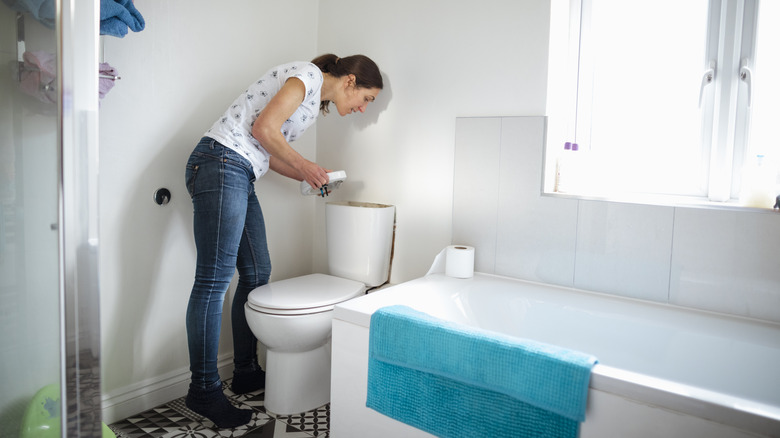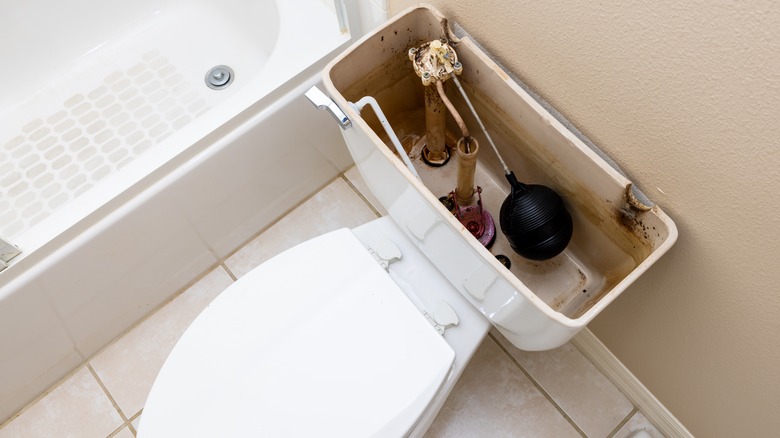The Smart Hack That Stops Rising Water From Overflowing In A Clogged Toilet
Few things in life are worse than a clogged toilet. Whether you've used too much two-ply, your kids thought their favorite toys would be more fun floating around the bowl, or your partner has been going a little too hard on that high fiber diet, there are several reasons why your toilet may keep clogging. You may also struggle with clogged toilets if you've got serious mineral buildup or when an old or low-flow toilet simply doesn't have the flushing power you need. When the cause of your clog seems organic and like it just might go down, it's tempting to cross your fingers and give your toilet an extra flush or two. But to avoid rising water from overflowing in a clogged toilet, right after flushing, you should remove the tank cover and simply redirect the refill tube into the tank itself.
If you've never looked inside your toilet tank, it can seem overwhelming at first. But understanding how your toilet parts work may save you a small fortune if you can identify and fix a small problem without enlisting the help of a plumber. For this smart hack, start by locating the refill tube. Made from a flexible plastic material, a standard refill tube is typically around 8 inches long. It will either be clipped to the top or just sitting inside of a larger tube located in the center of your tank called the overflow tube. All you need to do to stop rising water from overflowing your toilet is to move the refill tube out of the overflow tube, allowing water to flow directly through the refill tube into the toilet tank itself.
Why this hack works
Getting to know what's under the proverbial hood of your toilet tank is the key to understanding why this smart hack works. When your toilet is working properly, the refill tube sits inside the overflow tube to send a small trickle of water into the toilet bowl each time you flush. If you've ever needed to repair a running toilet that had a steady stream of water pumping into the bowl nonstop, a faulty refill tube was the likely cause. The refill valve "knows" to stream water into the bowl because it's connected to the flush valve, a component that triggers the actual flushing of waste when you push the handle on the front of your toilet after using the bathroom.
Flushing the toilet causes a chain reaction inside your toilet tank, opening the appropriately-named flush valve so that all the water inside the tank rushes into the toilet bowl. This action moves the waste down your pipes and into a sewer or septic tank. As the water level goes down, the float ball drops, opening yet another set of tubes and valves that let more water into the tank. The water keeps entering to fill the tank until the float ball is level with the top of the water, which causes the flow to stop. When you remove the refill tube from the overflow tube and allow it to pump water directly into the tank, the float ball rises and shuts off the water before it can refill or overflow the toilet bowl.

